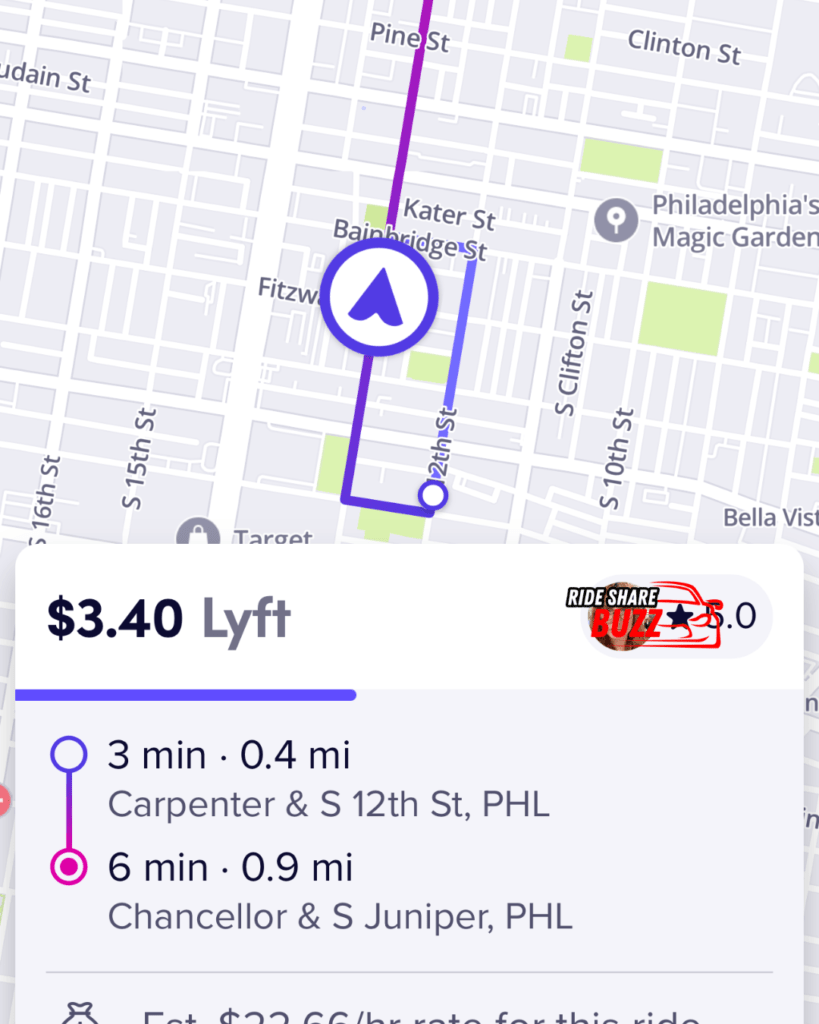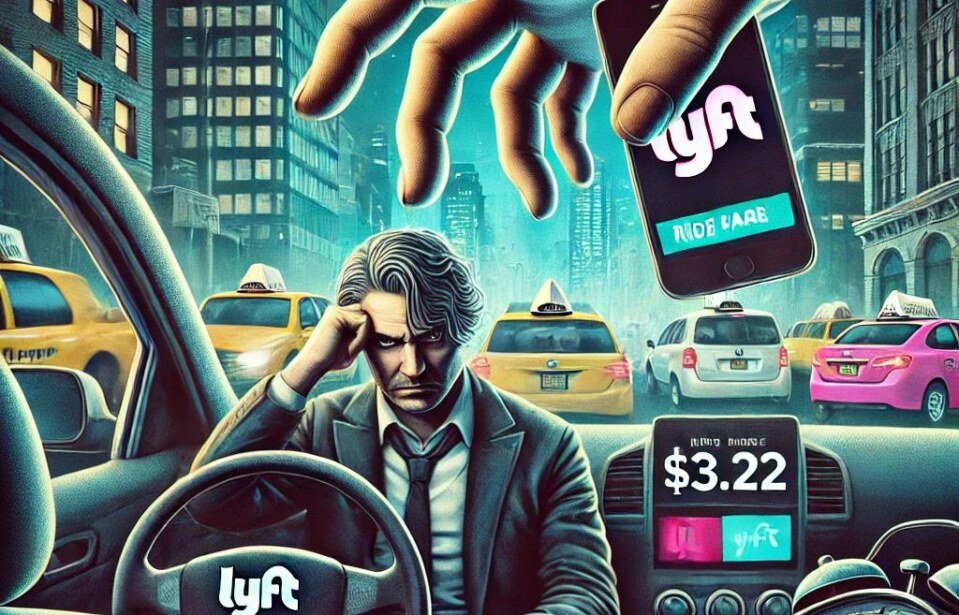In the gig economy, rideshare companies like Lyft have built their businesses by promising drivers flexibility, independence, and an opportunity to earn on their own terms. However, the reality behind the wheel often tells a very different story. For many drivers, the pay structure and treatment from these companies can feel more like exploitation than empowerment. In fact, some might even argue that the way Lyft treats its drivers is akin to modern-day slavery.
As a driver, I’ve experienced firsthand the frustrations and challenges that come with working for Lyft. One of the biggest issues is the laughably low minimum fare, which is $3.40. This fare often requires 15-20 minutes of driving, navigating traffic, and dealing with passengers—all for a sum that barely covers the gas used for the trip, let alone the wear and tear on the vehicle or my time.
In this blog, I’ll break down why I believe Lyft’s treatment of drivers is exploitative, how the pay system works against us, and what needs to change.
The Minimum Fare Problem
Imagine accepting a ride request, driving several minutes to pick up the passenger, taking them to their destination, and ending up with a fare of just $3.40. Now, factor in that the entire process, from accepting the request to dropping the passenger off, could easily take 15 to 20 minutes. After Lyft takes its cut, you’re left with even less—perhaps around $2.75.
For context, $3.40 is less than what it costs to buy a cup of coffee at most places. Yet, this is what Lyft considers fair compensation for a driver’s time, gas, and use of their personal vehicle. This amount doesn’t take into account the waiting time between rides, the cost of gas, insurance, vehicle maintenance, or the inevitable toll driving takes on your mental and physical health. It’s no wonder drivers often feel they’re being taken advantage of.
For a driver, every minute counts. But when a single ride only nets you a few dollars after 20 minutes of effort, the math simply doesn’t add up. How is anyone supposed to earn a living wage under these conditions?
Breakdown of Earnings

To understand why this is so exploitative, let’s break down what drivers actually earn. Lyft typically takes between 25% and 50% of each fare. So, for that $3.40 ride, Lyft might pocket over $1, leaving the driver with less than $2.75. Factor in gas, which in many places costs well over $3 per gallon, and a typical ride might not even cover the cost of the fuel burned.
On average, drivers report making anywhere from $8 to $12 per hour after expenses, which is well below the minimum wage in many parts of the country. And that’s not even counting vehicle wear and tear, insurance, and other hidden costs. Drivers bear all of the responsibility while Lyft reaps the profits.
When rides take 15-20 minutes for such low pay, it becomes clear that Lyft’s pay model isn’t designed to benefit drivers. It feels as though drivers are just cogs in a machine—disposable and easily replaceable, while the company benefits from our labor without properly compensating us.
Lack of Protections
Unlike traditional employees, Lyft drivers are classified as independent contractors. This means we don’t receive health insurance, retirement benefits, sick days, or vacation time. We’re expected to cover our own expenses—gas, maintenance, insurance, and more—out of pocket.
This lack of protection becomes especially problematic when accidents happen, or during times of personal illness. If you can’t drive, you don’t earn money. It’s that simple. But life doesn’t stop just because you’re unwell or your car breaks down.
Rideshare drivers take on immense financial risk every time they get behind the wheel, and yet we receive none of the stability or security that traditional jobs provide. The responsibility falls entirely on us to maintain our livelihoods, with little to no support from Lyft.
Comparisons to Other Jobs
Let’s compare rideshare driving to other types of work. A job that pays $10-$15 an hour for unskilled labor would typically also come with some form of benefits—healthcare, paid time off, etc. Even fast food jobs provide these kinds of perks for full-time workers. And while the work might be just as physically and mentally taxing, at least there’s some degree of stability.
Lyft drivers, on the other hand, can drive for 12 hours a day and still walk away with barely enough to cover their basic living expenses. The pay for rideshare driving is inconsistent, unpredictable, and often dependent on factors beyond the driver’s control—traffic, ride demand, and the fluctuating price of gas.
For the amount of time and energy required, rideshare driving should at least offer a minimum wage guarantee, yet drivers are often left earning far less than they would at a traditional job.
Account Deactivation for Minor or False Claims
One of the most troubling aspects of driving for Lyft is the ease with which the company can deactivate a driver’s account based on minor infractions or even false claims from passengers. Drivers can be deactivated without proper verification of the claims made against them, and Lyft often doesn’t even give the driver a chance to present their side of the story.
For example, a passenger could falsely claim that a driver was rude or that the car wasn’t clean, and Lyft might take that complaint at face value, leading to an immediate deactivation of the driver’s account. The problem is that these decisions are often made without a thorough investigation. Drivers are left in the dark, unable to defend themselves against baseless accusations, which can result in a sudden and complete loss of income.
Lyft’s appeals process, if you can even call it that, is often slow and ineffective. Many drivers report submitting evidence or explanations only to have their pleas ignored or outright rejected. The power imbalance is clear—drivers have no real recourse, and the company doesn’t appear to care whether or not the claims are legitimate. This lack of support makes drivers feel powerless and expendable, further adding to the sense of exploitation.
For many, the threat of deactivation is always looming in the background, creating an environment of fear and insecurity. Drivers who rely on Lyft for their livelihood are always at risk of being cut off without warning, with no fair process to protect their rights. This is yet another example of how drivers are treated as disposable labor, rather than valued partners.
What Needs to Change
This system is unsustainable. Rideshare companies like Lyft need to re-evaluate how they treat their drivers and start offering fair compensation for the time, effort, and expenses involved in each ride.
Here are some changes that could make a big difference:
- Higher Minimum Fares: The minimum fare of $3.40 is simply not enough to justify a driver’s time and expenses. It should be raised to a more reasonable amount that covers both the cost of gas and a fair wage for the driver’s time.
- Better Profit-Sharing: Lyft takes too large of a cut from each ride. The profit-sharing model should be adjusted to give drivers a larger percentage of each fare.
- Benefits for Drivers: Drivers should have access to basic benefits like health insurance, paid sick leave, and retirement savings options. Lyft could create a program where drivers can opt into these benefits.
- Regulated Pay Per Hour: There should be a guaranteed minimum hourly wage for drivers, ensuring that even during slow periods, they are compensated fairly for their time on the road.
- Fair Driver Deactivation Policies: Lyft should implement a transparent, fair investigation process before deactivating a driver’s account. Drivers must be given the opportunity to defend themselves, and any claims made against them should be thoroughly verified before any action is taken.
Conclusion
Rideshare driving with Lyft can often feel like modern-day exploitation. Drivers are expected to invest their time, money, and effort with little in return, all while Lyft continues to profit. The minimum fare of $3.40 is a glaring example of how drivers are undervalued and underpaid. Worse, the threat of deactivation based on unverified claims means drivers have little job security, leaving them vulnerable to the whims of passengers and the company alike.
For the rideshare industry to be truly sustainable, companies like Lyft need to rethink their pay structures and start treating drivers with the respect and compensation they deserve. Until then, drivers will continue to struggle, and the promise of “independence” in the gig economy will remain a hollow one.





Leave a comment